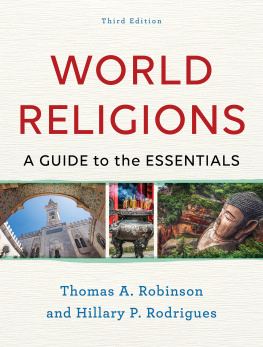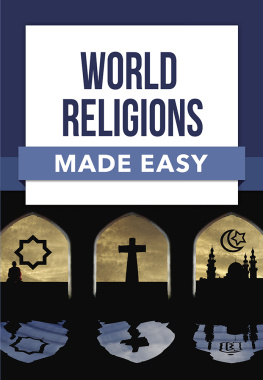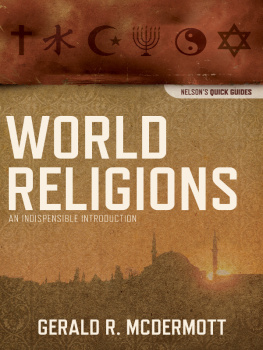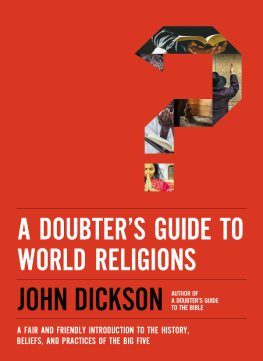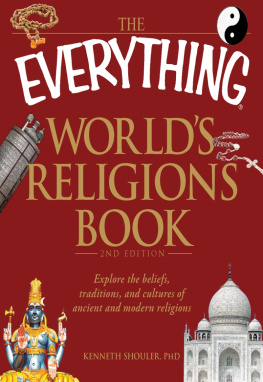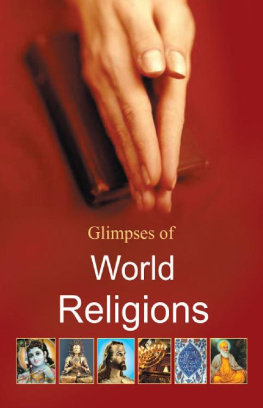This project was conceived some years ago by professors Tom Robinson and Hillary Rodrigues of the Department of Religious Studies at the University of Lethbridge in Alberta, Canada. This edition includes contributions from other department members: James Linville, John Harding, and Atif Khalil. It also addresses religious responses to modern social issues, such as gender and sexuality, and concerns about the environment. New timelines, calendar and festival graphics, and sections on the importance of the solar and lunar calendars to religious festivals have been added. There are also some new photos and edited maps. Summary boxes of key points have been retained, since students have found these to be effective tools for quick review.
chapter one
Studying World Religions
What Is Religion?
Religion is a characteristic of the human speciesstretching from antiquity to the present, from simple societies to the most complex, from the unlearned to the educated, from the weak to the powerful, from the young to the old, from the peripheries to the centers of power. Yet religion is notoriously difficult to define. Some scholars argue that no definition can be adequate, since religion as expressed throughout the world and throughout human history is simply too diverse and complex to be neatly captured in a short definition that identifies a common condition. Indeed, most of the common assumptions about religion fail when we try to apply them to all the traditions we normally think of as religious.
Surely gods must be present in religion, one might think. No, for some religions deny either the existence of gods or their relevance. Surely an afterlife must be important in religion. No, for some religions either deny an afterlife or do not divide present and future existence in this way. Perhaps a moral code of some kind captures a common element in religion. No, for in some societies morality is primarily dealt with by philosophers rather than priests, by the academy rather than the temple; and among some peoples, codes of behavior provide social order and create stable societies without appeal to religious motives or motifs. Perhaps the common feature among religions is some sense of the Otheran awareness of a dimension beyond the visible and the ordinary. But that definition, even if true, is too vague, open-ended, and without sufficient content to provide substance to our definition of religion.
Another problem makes it difficult to find a precise definition of religion. It is sometimes not possible to neatly distinguish the religious dimension from the nonreligious. For example, many political ideologies have offered a comprehensive vision of the world and demanded sweeping commitment from their members, differing little from the sense and scope of claims made by religious groups. By the same token, some religious systems are essentially political in nature, while others are predominantly personal. Or consider the world of sports. Normally, sports provide small adventures of escape into the realm of play and relative meaninglessness; sometimes, however, sports become warped into a comprehensive world of conviction and commitment by which an individuals life is inspired and its value and meaning determined, and where good and evil battle each other on the playing field for the souls of fans.
The difficulty in finding a fully adequate definition of religion need not lead us to the conclusion that the concept of religion is without substance, though recently some have come to hold that view. There seems to be enough commonality among things that are not easily grouped under any other category to suggest that some broad phenomenon lies behind them. Further, such matters cross diverse cultures and span vast periods, giving us a sense that at some level religion is a profound part of the human experience.
Religion and Religions

